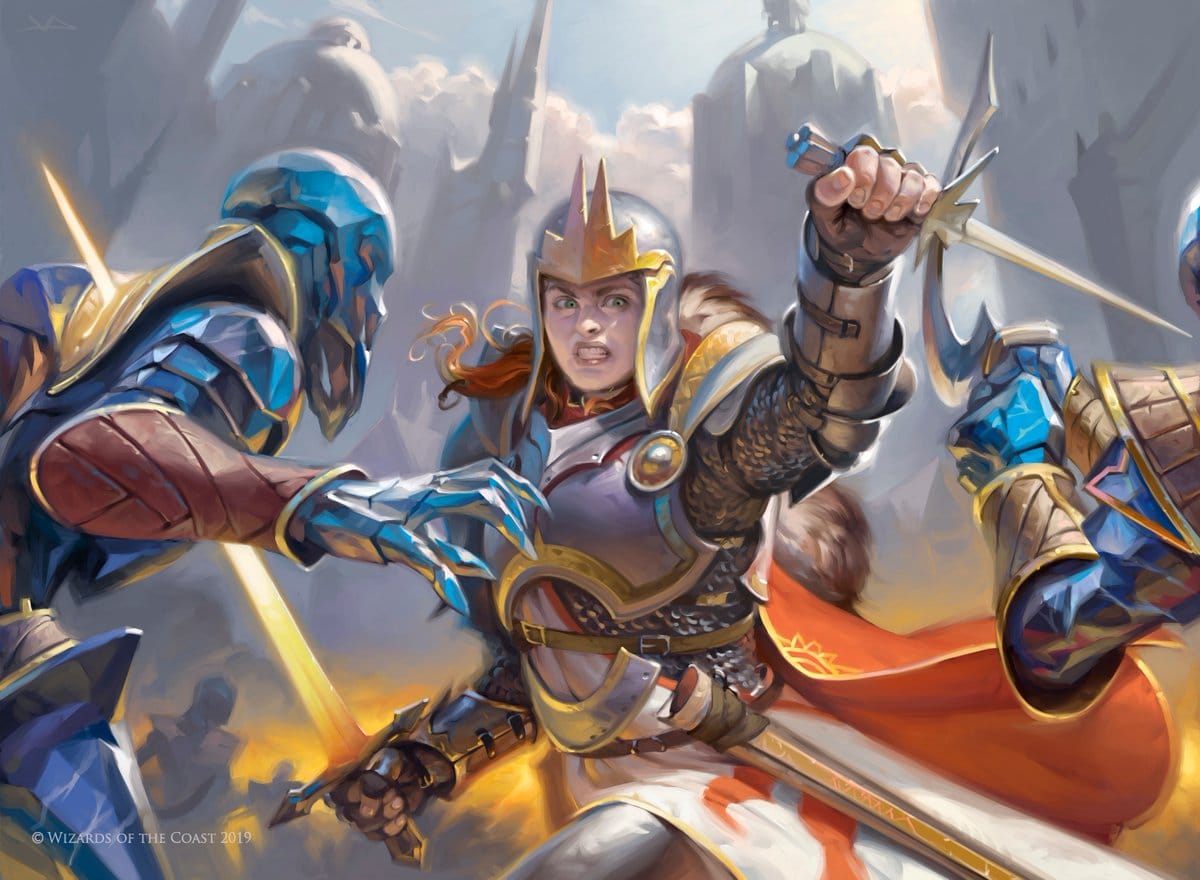Mage Slayer 5e
Published on June 2, 2022, Last modified on September 28th, 2023
Mage Slayer is an attractive feat for martials who want to make life tough for enemy spellcasters. Unfortunately, an update to D&D’s system hurt it’s viability. Learn more here.

Victor Adame Minguez - Wizards of the Coast - Tenth District Legionnaire
What Is Mage Slayer 5e?
Spellcasters are well known to be very powerful in D&D 5e, as the limits on martial classes is huge in comparison. One of the few feats given to even the playing field is Mage Slayer, a feat that lets martial classes beat up those spellcasting nerds.
How Does Mage Slayer Work?
Once you’ve picked this feat up, you get three new benefits:
- You gain advantage on saving throws against spells cast by creatures within 5ft of you.
- When you damage a creature that is concentrating on a spell, they gain disadvantage on their saving throw to maintain it.
- If a creature within 5ft of you casts a spell, you may use your reaction to make a melee weapon attack against them.
Is Mage Slayer Good?
We gave Mage Slayer a C Tier rating In our 5e Feats Tier List, making it a below-average feat in D&D 5e.
Unfortunately, with the changes to monster stat blocks made post-Oct. 4th, 2021 update, Mage Slayer has received a massive nerf. Most spellcasting creatures (other than player characters) got their spell list greatly reduced and now rely on “spell-based actions” to do damage and perform other effects that used to be spells. Jeremy Crawford confirmed that these melee/ranged spell attacks do not trigger counterspell because they don’t count as spells. Therefore, they won’t trigger Mage Slayer’s reaction.
Mage Slayer can be still be a worthwhile feat if:
- You’re playing in a campaign with tons of spellcasters (i.e Strixhaven)
- Your DM prefers to use pre-Oct. 4th, 2021 update stat blocks
- Your DM rules that spell attacks count as spells for Mage Slayer’s effects
With this said, we have dropped the rating of Mage Slayer from a B Tier to a C Tier to reflect the nerf. Because the ratings for Mage Slayer vary so wildly, it’s best to pick this up after you’ve played a couple of sessions to see what kind of enemies you’re up against. Builds that get a feat at 1st level, like variant humans, would certainly rather pick up a feat they know will make an impact on their day-to-day play.
Mage Slayer 5e Interactions
Naturally, players can make some challenging interpretations of the rules since spellcasting is so complex at times. Here are some common interactions you may need to know about:
- If a spell were countered by counterspell, Mage Slayer would trigger, as the spell was still ‘cast,’ but nothing happened.
- If a spell was cast that moves the caster (like misty step), the caster has already moved before a player can make a reaction. For more information on this, check the DMG p.252.
- Those with Mage Slayer need to be able to see or hear a spell being cast to use their reaction, meaning using Subtle Spell won’t trigger it.
- Having a weapon with reach doesn’t increase the range of Mage Slayer’s reaction; they still need to be within 5ft.
- Spell attacks (i.e spell effects that aren’t listed as spells in a sourcebook) do no trigger Mage Slayer’s effects.
Mage Slayer 5e FAQs
Does Mage Slayer interupt a spell?
This feat doesn’t stop a spell from being cast, only checking if a spell was attempted to be cast. It does have the chance to break concentration though if they fail the save.
Does having a longer reach extend Mage Slayer's reaction?
No. You will still need to be within 5 feet of the creature casting the spell in order to trigger the reaction.
Do I have to see the spell being cast in order to use Mage Slayer?
Yes. You need to have visual cues that a creature has cast a spell in order to use Mage Slayer's reaction.
Do spell attacks trigger Mage Slayer's effects?
No. Spell attacks are not 'spells' and therefore don't trigger Mage Slayer's reaction, nor their advantage on saving throws if the enemy is within 5 feet.
Does Mage Slayer work with Sentinel?
The Sentinel feat is all based around attacks of opportunity, while Mage Slayer is checking for spellcasting and providing an attack against them. The only way these interact is that you can better disrupt their concentration when you hit an enemy with the opportunity attack.
Conclusion
Mage Slayer used to be a stellar feat, but the nerf in Oct. 2021 really hurt its viability. As it stands, it can still be beneficial depending on your campaign. It might not fit every build, but martials who want to foil spellcasters can make excellent use of the potent effect it provides.
